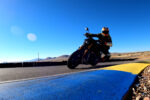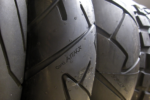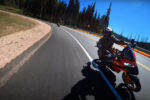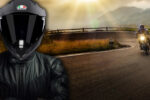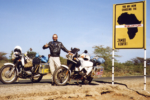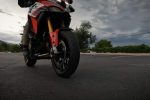The Best Beginner Bike Doesn’t Exist
If you are trying to decide what bike to buy, what bike is right for you. There are two questions you need to have the answer to.
The first one is simple. Which kind of bike do you like the look of the best? The right answer is the honest one. The wrong answer is the bike you think others will approve of. So! If you’ve always wanted a Kawasaki Ninja. Get the Ninja 400! My dad loves cruisers. So, I bought a cruiser mostly for him – and It wasn’t the right bike for me.
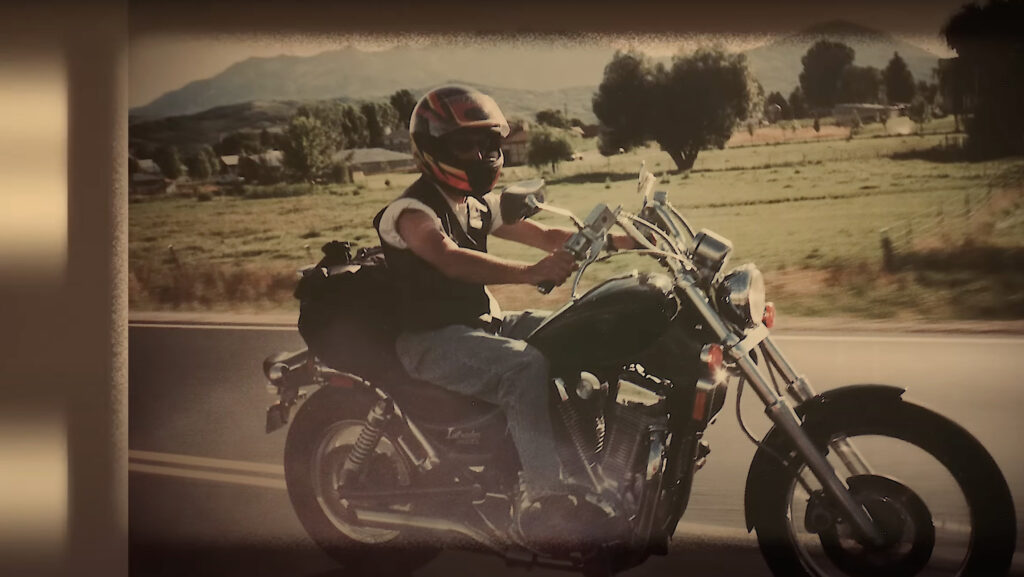
That’s not to say Cruisers are bad, in fact, later in this video we’re going to learn just the opposite of that. And that’s whats at stake, right? You don’t want to spend lots of money on a bike that isn’t what you want. And that’s what this video will help you with.
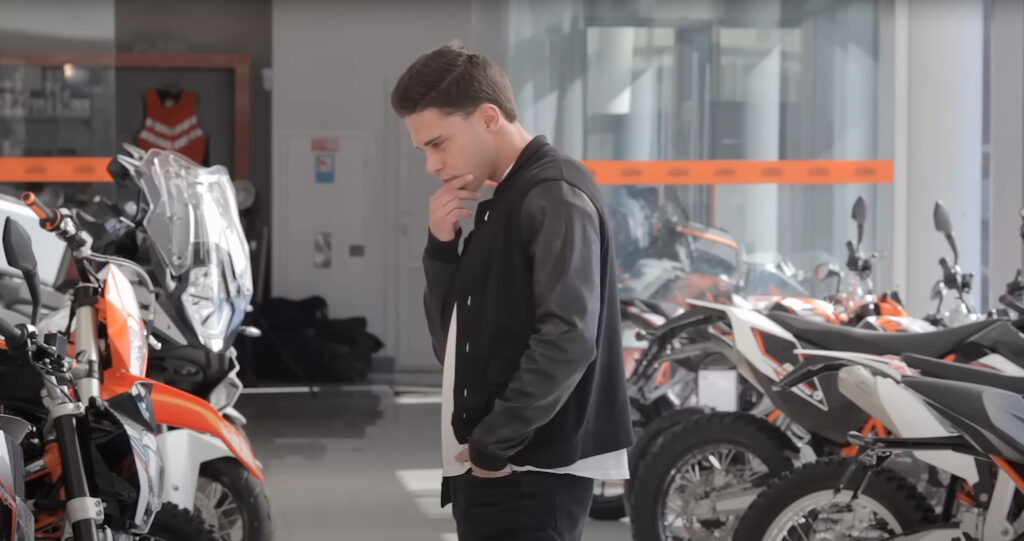
Now the second question. That’s a lot harder to answer and before we can even get into that, we need to explain what makes all the bikes different. There’s a lot more to it than the seating position, body work, chrome and handlebars. We need to understand some basic motorcycle anatomy and more specifically, we need to understand motorcycle geometry, which is just a mathematical way of describing the relationship between the wheels and the frame. I’m going to simplify things so if you are brand new to this and you are already feeling overwhelmed with the information you are wading through, this will help things make a lot more sense.
On a motorcycle frame is the headset, we want to pay attention to this angle. Then there are triple clamps, they live in the headset, and why these are important is whats called offset – which is how far forward the fork tubes are from the steering stem.
Then the swingarm, and the important part is the length and the angle. The distance between where the tires touch the ground is called the wheelbase. Then the suspension. We want to know how much ‘travel’ we have. Other things we need to pay attention to are the weight and the height of the bike and lastly, the wheel size.
You see, what makes a cruiser a cruiser and what makes a sport bike a sport bike involves all these traits, because they define what it’s like to ride that bike. How it accelerates, stops and turns.
A longer wheelbase makes a bike more stable but more reluctant to turn. A lower center of gravity is going to be more stable, but also, harder to lean and change direction. Bigger front wheels are more stable and are better at rolling over bumps, but take more energy to accelerate, slow down and to change direction. Front wheels come in lots of different sizes and make a huge difference with how the bike handles.
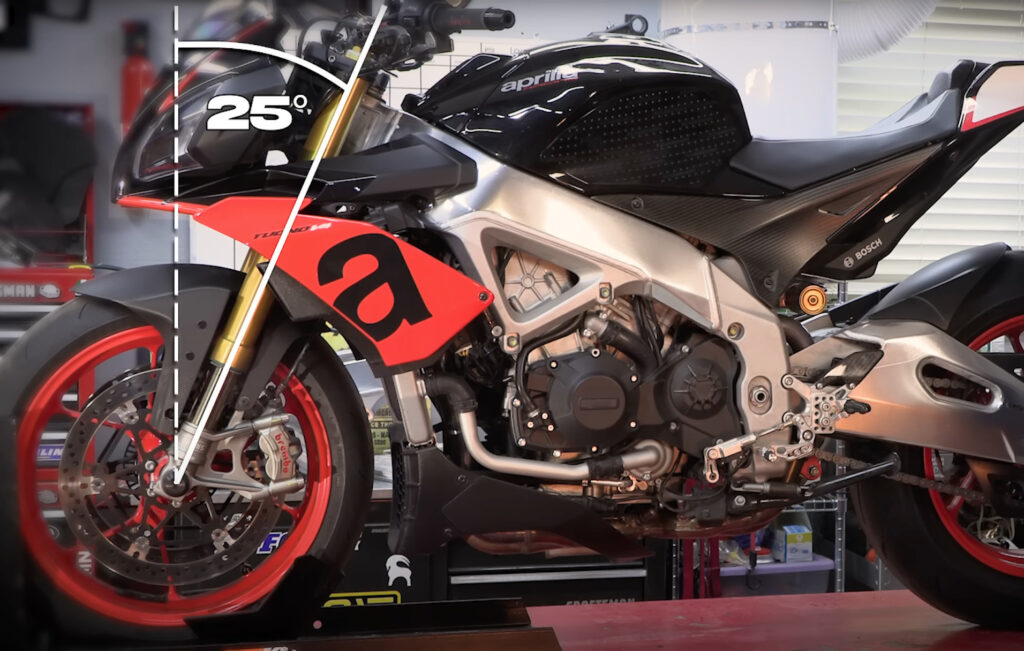
And then there is rake, which is the same thing as castor. This is the angle of the forks, and you can see this with the difference between a cruiser with 45-degrees of rake, and sportbike with 25 degrees of rake. More rake makes the wheelbase longer and it increases trail.
And that brings us to the most important number of them all. Trail. Trail is the distance between the front wheels contact with the ground and an imaginary line drawn through the axis of the steering head. Not the forks! This is why the offset of the triple clamps is such a big deal. It can dramatically alter the trail independently of rake. Remember, trail is the most important number to pay attention to. A lot of trail makes a bike really stable. Not enough trail makes a bike more nimble.
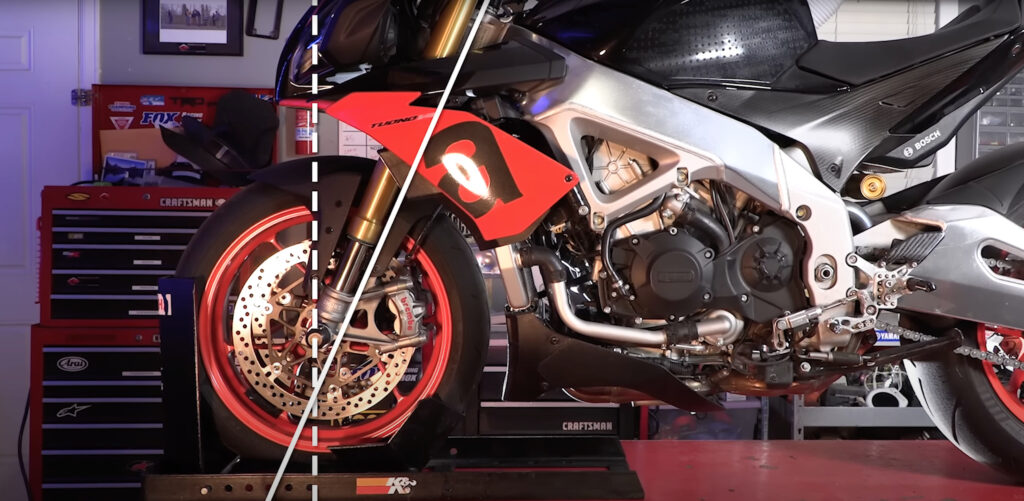
The reason why I bring this up is because “rake”, the thing most people bring up and that we can see at a glance, doesn’t tell us nearly as much as the trail number. We’re still not ready to ask that second question yet, but we’re getting there.
So, a cruiser! Long wheelbase, lots of weight down low, long swingarm, long forks raked way out, big giant front wheel and, typically, a bigger trail number, we can get an extremely good idea about what it’s going to be like to ride. It’s going to be extremely stable at the cost of what? It’s not going to be very nimble. Right?
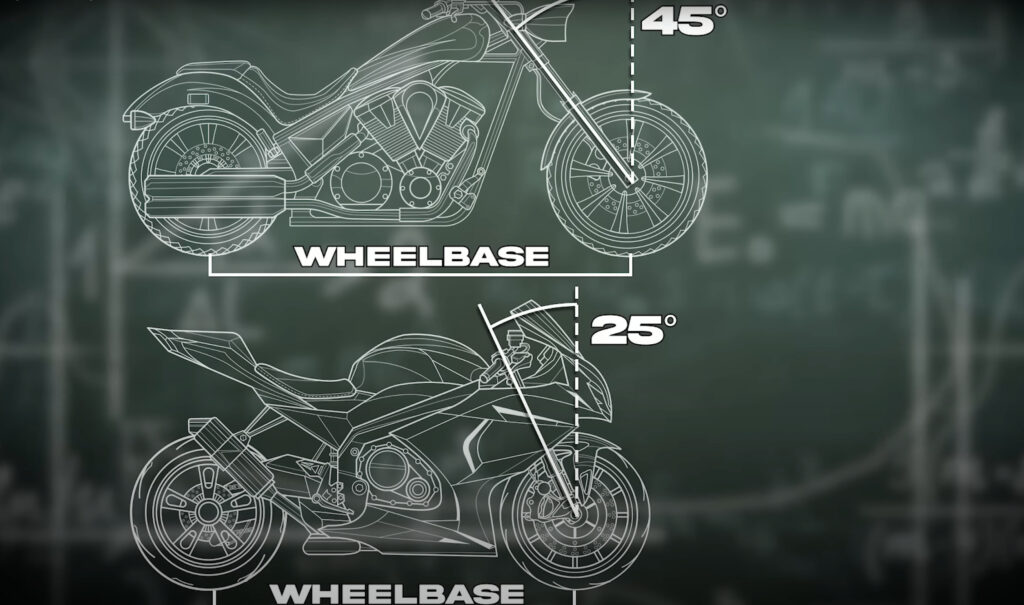
Now, lets go to the other extreme, the sport bike. Short wheelbase, higher center of gravity, low weight, steep forks, short trail number and small wheels. It’s going to want to change direction, at the cost of what? Stability, right? So, we can really see the appeal of cruisers, especially for newer riders. A low center of gravity; a low seat height, so it’s easy to get our feet on the ground and they are famously stable, and in todays world, some cruisers aren’t even all that heavy anymore. The Honda Rebel 500 weighs less than many sport bikes!
Within each segment of bikes, there is a wide range of differences. Cruisers range from choppers to power cruisers, for example. But other popular styles of bikes are the naked bike, sport touring, touring, adventure, enduro, motards. It gets confusing right?
But, let’s look at a dual purpose or adventure bike. It might have 21 or 19” wheels. What does that tell us? Big wheels are more stable and deal with bumps better. They tend to have a longer wheelbase, but a higher center of gravity for more ground clearance. They tend to have more suspension travel, so they are plush on bumpy roads, but might feel “wallowy” or vague on a fast, twisty road. But let’s compare the all important trail numbers. If a cruiser typically has a trail number of 135mm and a sport bike has a trail number 85mm, and our big adventure bike has a trail number of 106mm, what does that tell us? It’s no wonder these style of bikes have become so popular right?
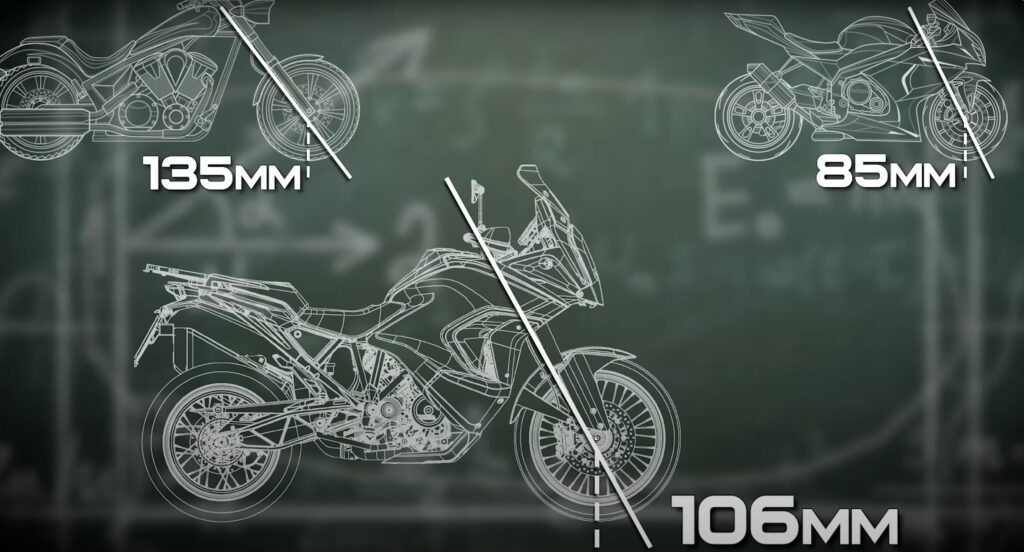
This is why you’re right to be so concerned about what bike you should choose. But now that you understand the geometry a bit better, especially the importance of trail, you can go through the specs listed for any motorcycle and start to understand what that bike is going to be like to ride.
And that gets us into the second question we need to answer, and that’s what kind of riding experience are you looking for? Again, no right or wrong answer here, but honesty will get you a better end result.
But, seriously, what kind of riding do you want to do? When you close your eyes and imagine yourself riding, what do you see? Do you want to take the weekend and wander off to your nearest national park? Do you want to head up to get breakfast with your buddies on Sunday morning? Do you want to go fast through corners? Do you just want to commute so you get the good parking spaces on campus? Define the riding experience you want and finding the right bike suddenly gets a whole lot easier.
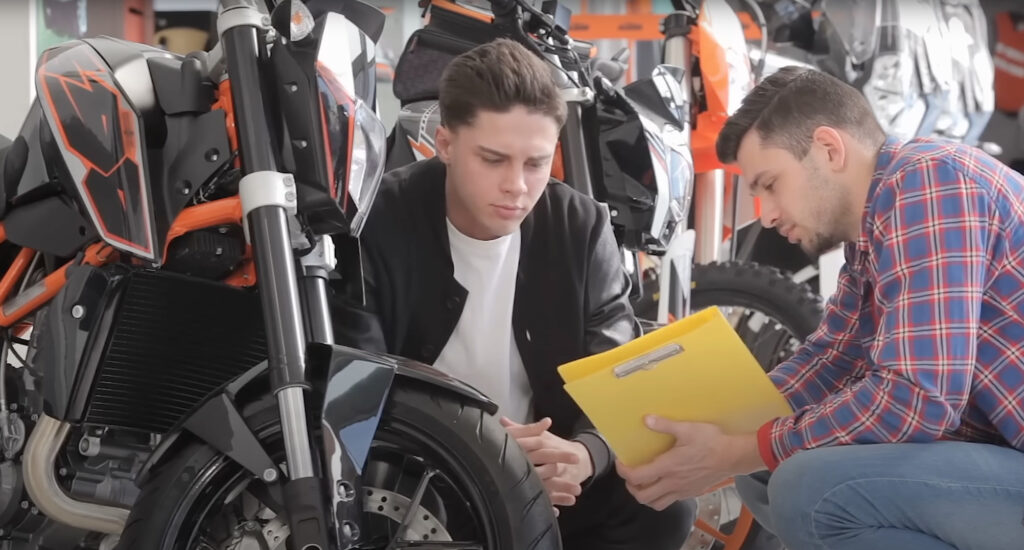
That’s why the Best Beginner Bike doesn’t exist. Sport bikes aren’t better than cruisers or vice versa or any of that, because the best beginner bike, hell, the best bike is the bike that’s best for you.
And if you’re still not sure, may we recommend a basic naked bike. Why? Because, like the adventure bike, it’s a jack of all trades but master of none bike. And that’s not a bad thing. As a newer rider a naked bike will help you discover the kind of riding you actually enjoy the most. You don’t want to buy a plastic wrapped superbike to discover you actually enjoy a more laid back, meandering experience, or vice versa. A naked bike can tour, do a track day, it can commute, it’s comfortable, has good visibility, and has very neutral geometry.
